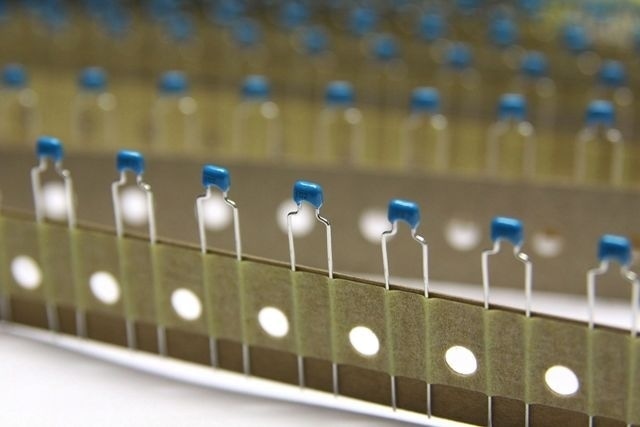Mar 18 2016
Scientists from Hokkaido University and the multinational Japanese electronics company TDK Corporation have discovered a new process to enhance the insulating properties of oxynitride perovskite SrTaO2N. This material could potentially be used as a ceramic capacitor.
 Blue ceramic capacitor
Blue ceramic capacitor
Ceramic capacitors are employed in various fields of electronics, from mobile phones and computers to high voltage laser power supplies and telecommunications transmitter stations. Capacitors behave similarly to batteries. They are “dielectric" - they perform like an electronic insulator where an electric field can be sustained, with little power loss. Due to their dielectric properties, capacitors can store energy and release it later. A commonly used ceramic for capacitors is the zirconate titanate, however this compound is hazardous to health and harmful to the environment when it is disposed. Scientists are working to discover a ceramic material that is less hazardous to make safer capacitors.
A promising group of alternative material is the perovskite oxynitrides, which are cost-effective, and can be easily fabricated to possess a unique crystalline structure. To improve their insulating properties, these materials have to be made denser. This can be achieved by applying extreme heat, which is referred to as sintering. However the chemical composition of a material is changed after sintering, transforming insulting materials into electrical conductors.
The research team sintered perovskite SrTaO2N in powder form at a temperature of 1723 K (1450°C) for three hours. Then this material was “annealed” by heating with flowing ammonia at a temperature 1223 K (950°C) for 12 hours, followed by slow cooling.
After this process, the team found that the surface of the material (not its interior) exhibited a key dielectric property known as “ferroelectricity.” This was the first-ever observation of a ferroelectric response in oxynitride perovskite ceramics. This new development makes the oxynitride perovskite ceramics a promising dielectric substitute material for ceramic capacitors with multiple layers.